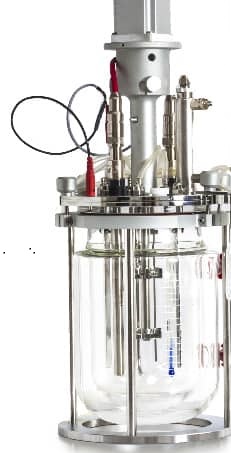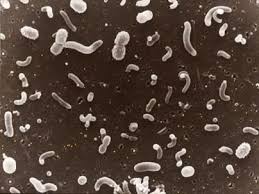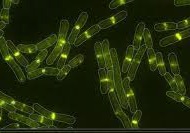Fed-batch fermentation is a critical and widely used process in modern biotechnology and industrial microbiology. It is defined as a type of liquid fermentation method in which growth-limiting nutrients, such as carbon, nitrogen, or trace elements, are not added all at once but are instead introduced incrementally into the fermentation medium throughout the fermentation process. This controlled addition of nutrients enables fine-tuning of the microbial growth environment, allowing operators to manage cell growth, optimize product formation, and prevent the build-up of inhibitory by-products.
The fed-batch approach is particularly advantageous in processes where high concentrations of substrates can lead to substrate inhibition, catabolite repression, or the formation of toxic metabolites. By avoiding the high initial concentrations of nutrients typical in batch fermentation, the fed-batch process ensures that the cells are maintained in an optimal physiological state, which can enhance both biomass and product yield. This makes it especially useful for the cultivation of microorganisms that are sensitive to nutrient concentrations or for the production of metabolites and proteins whose synthesis is tightly regulated by nutrient availability.
Although fed-batch fermentation begins similarly to a batch process—where an initial volume of medium is inoculated with a microbial culture—the key difference lies in the subsequent addition of nutrients. In fed-batch systems, nutrients are added either continuously or at set intervals in response to metabolic needs, pH changes, dissolved oxygen levels, or other physiological indicators. The feeding strategy can be designed based on predetermined schedules or real-time monitoring of the culture’s metabolic activity, which allows for a dynamic and responsive approach to fermentation control.
Fed-batch fermentation is widely used in the production of a variety of industrial and pharmaceutical products, including recombinant proteins, antibiotics, organic acids, biofuels, enzymes, and vaccines. It is favored for its flexibility, scalability, and ability to support high-cell-density cultures, which are often essential for achieving economically viable product yields. In summary, fed-batch fermentation represents a hybrid model between batch and continuous fermentation processes, offering the advantages of both while mitigating their respective limitations through a more controlled and efficient nutrient management strategy.
Characteristics and Mechanism of Fed-Batch Fermentation
In a typical fed-batch fermentation, the bioreactor is initially filled with a basal medium containing a low concentration of key nutrients. As the fermentation progresses, additional nutrients are supplied either at regular intervals or based on real-time monitoring of culture parameters such as pH, dissolved oxygen, carbon dioxide evolution rate, or cell density. This approach enables a more refined control over microbial growth and metabolic activity.
Unlike continuous fermentation where both substrate and product are continuously added and removed respectively, fed-batch fermentation does not allow for the removal of culture broth during the process. Therefore, the volume in the bioreactor increases over time. The operational design of fed-batch fermentation may include exponential feeding, constant-rate feeding, or feedback-controlled feeding strategies, each with specific implications on the growth kinetics and metabolic outputs of the culture.
Fed-batch fermentation is often used when the product yield is maximal at low substrate concentrations or when substrates are inhibitory at high concentrations. Moreover, it allows for a temporal variation in nutrient availability that aligns with the dynamic physiological states of the microorganism. This is particularly important in optimizing secondary metabolite production, managing catabolite repression, and avoiding substrate inhibition.
Applications of Fed-Batch Fermentation
Fed-batch fermentation has become a cornerstone in industrial biotechnology due to its flexibility, efficiency, and suitability for a wide variety of microbial production processes. By allowing precise control over nutrient availability and environmental conditions, this approach is widely used to optimize yield, enhance product quality, and reduce production costs across multiple sectors. Below are key areas where fed-batch fermentation has found significant application:
1. Recombinant Protein Production
Fed-batch fermentation is extensively employed in the production of recombinant proteins, especially therapeutic proteins used in biomedicine. These include critical pharmaceuticals such as human insulin, interferons, interleukins, monoclonal antibodies (mAbs), and recombinant growth hormones. The process is particularly advantageous for recombinant expression systems in organisms like Escherichia coli, Saccharomyces cerevisiae, and Chinese Hamster Ovary (CHO) cells. In these systems, nutrient feeding strategies are designed to prevent metabolic overflow and accumulation of inhibitory byproducts such as acetate or lactate, while maintaining high biomass concentrations. This allows for prolonged expression of target proteins under tightly controlled conditions, improving both yield and consistency in biopharmaceutical manufacturing.
2. Production of Industrial Enzymes and Biocatalysts
Fed-batch systems are widely utilized for the production of industrially important enzymes including amylase, cellulase, lipase, xylanase, and protease. These enzymes play essential roles across diverse industries such as food processing, detergent formulation, textiles, animal feed, pulp and paper, and biofuel production. The fed-batch approach helps maintain an optimal growth environment and can reduce the risk of catabolite repression or nutrient inhibition, which are common challenges in enzyme biosynthesis. Moreover, by enabling high-cell-density cultivation, fed-batch processes enhance enzyme yield and facilitate downstream processing.
3. Amino Acids and Organic Acids
The commercial-scale production of amino acids and organic acids is another domain where fed-batch fermentation proves highly beneficial. Amino acids such as lysine, glutamate, threonine, tryptophan, and methionine are produced using genetically engineered strains of bacteria like Corynebacterium glutamicum and E. coli. These compounds are extensively used as nutritional supplements, animal feed additives, and precursors for industrial synthesis. Similarly, fed-batch fermentation is used for the microbial production of organic acids like citric acid, lactic acid, fumaric acid, and acetic acid, which are crucial for the food, pharmaceutical, and chemical industries. The ability to manipulate nutrient feed rates and pH control in fed-batch mode enhances acid accumulation while minimizing product degradation or microbial inhibition.
4. Antibiotic Production
Many antibiotics are secondary metabolites, and their production is closely linked to specific growth phases of the producing organisms. Fed-batch fermentation offers the necessary flexibility to manage the shift from growth to production phase efficiently. Antibiotics such as penicillin, erythromycin, streptomycin, tetracycline, and cephalosporins are produced using filamentous fungi and actinomycetes like Penicillium chrysogenum and Streptomyces species. By supplying nutrients in a controlled fashion, the process limits feedback inhibition and enhances overall product yield. Moreover, fed-batch systems help prevent substrate inhibition and maintain the appropriate carbon to nitrogen ratio essential for maximizing antibiotic synthesis.
5. Biofuels and Bioplastics
The global pursuit of sustainable energy and biodegradable materials has intensified the use of fed-batch fermentation in the production of biofuels and bioplastics. Microbial production of ethanol, butanol, hydrogen, and biodiesel using yeasts and bacteria benefits from fed-batch operation, which supports high cell densities and allows for better management of toxic intermediates and substrates. Likewise, polyhydroxyalkanoates (PHAs)—a class of biodegradable plastics produced by microbes such as Ralstonia eutropha and Pseudomonas putida—are often synthesized in fed-batch mode to ensure high yield and cost-effectiveness. Nutrient limitation strategies (e.g., nitrogen or phosphorus limitation under excess carbon) are commonly applied to induce PHA accumulation during the production phase.
6. Baker’s Yeast, Alcoholic Beverages, and Vinegar
In traditional food and beverage industries, fed-batch fermentation is used to maintain consistent product quality and improve process efficiency. For example, baker’s yeast (Saccharomyces cerevisiae) is produced in large quantities using fed-batch fermentation, where sugar feed rates are carefully controlled to maximize biomass while minimizing ethanol production (which is a byproduct in aerobic conditions). Similarly, ethanol fermentation for beverage and industrial alcohols can benefit from fed-batch systems that manage sugar toxicity and osmotic stress. Acetic acid bacteria used in vinegar production also perform optimally in fed-batch processes, where substrate feed and oxygen supply can be carefully balanced to favor acetic acid accumulation without inhibiting microbial growth.
Advantages of Fed-Batch Fermentation
Fed-batch fermentation offers several advantages over traditional batch and continuous fermentation systems:
- Optimized Environmental Control: The gradual addition of nutrients allows for the fine-tuning of environmental conditions to match the metabolic needs of the microorganism at different stages of growth.
- Reduced Substrate Inhibition: By avoiding high initial concentrations of substrate, the risk of substrate toxicity and catabolite repression is significantly reduced.
- High Product Yields: Fed-batch fermentation supports high-cell density cultures and extended production phases, which often lead to higher overall product yields.
- Improved Process Stability: Unlike continuous systems that may be prone to contamination and washout, fed-batch systems offer a more stable environment, making them ideal for genetically modified or contamination-sensitive cultures.
- Flexibility in Process Control: The process allows for dynamic control strategies, including feedback loops based on sensor readings, which enhances responsiveness to the needs of the biological system.
- Economic Viability: While capital costs may be higher due to the need for more complex monitoring and control systems, the higher product yields and quality can offset these costs in commercial applications.
Disadvantages of Fed-Batch Fermentation
Despite its many advantages, fed-batch fermentation also presents some challenges:
- Complex Process Control: Maintaining the desired nutrient feed rates and environmental parameters requires sophisticated monitoring and control systems, increasing operational complexity.
- Time-Consuming Operations: The preparation, sterilization, filling, and cleaning of the bioreactor between batches can be labor-intensive and time-consuming.
- Lower Productivity Per Time Unit: Compared to continuous systems, the average productivity over time may be lower due to downtime between runs.
- Non-Steady State Conditions: The variable nature of nutrient addition leads to fluctuating conditions within the bioreactor, which can complicate scale-up and process standardization.
- Inability to Maintain Specific Growth Rates: Unlike continuous fermentation where growth rate can be maintained at a steady state, fed-batch processes do not offer this level of control.
Types of Feeding Strategies in Fed-Batch Fermentation
Fed-batch fermentation is widely recognized for its flexibility and control in optimizing microbial growth and product formation. A key aspect of this flexibility lies in the selection of the appropriate feeding strategy. The feeding strategy determines how nutrients are added to the bioreactor during the course of fermentation, and each method can significantly impact the productivity, yield, and stability of the process. The main types of feeding strategies in fed-batch fermentation include constant rate feeding, exponential feeding, feedback-controlled feeding, and pulse feeding.
- Constant Rate Feeding
In this strategy, nutrients are added into the bioreactor at a fixed rate over time, regardless of the physiological state or growth kinetics of the microbial culture. Constant rate feeding is the most straightforward method and requires minimal instrumentation or real-time monitoring. This simplicity makes it attractive for basic or small-scale applications where tight control is not critical. However, the major limitation of this approach is its inability to match the dynamic nutrient demands of the growing culture. If the nutrient supply is too low, it can result in substrate limitation and reduced growth; conversely, if it’s too high, it can lead to substrate inhibition, overflow metabolism, or accumulation of toxic by-products.
- Exponential Feeding
This method involves increasing the feed rate exponentially over time to match the exponential growth phase of the microorganisms. The goal is to maintain a constant specific growth rate (μ) by supplying substrates in proportion to the biomass concentration. Exponential feeding is particularly effective in high-cell-density fermentations, where maintaining optimal nutrient levels is crucial for maximizing product yield and minimizing the formation of undesired metabolites. Mathematical models are typically employed to calculate the feeding rate based on the desired growth rate, biomass concentration, and yield coefficients. While more complex than constant rate feeding, exponential feeding allows for greater control and efficiency in nutrient delivery.
- Feedback-Controlled Feeding
Feedback-controlled feeding strategies are based on real-time monitoring of process variables such as dissolved oxygen (DO), pH, substrate concentration, CO₂ evolution, or biomass levels. These parameters are continuously measured and used to adjust the nutrient feed rate accordingly. This strategy provides the highest level of control and adaptability, allowing the system to respond dynamically to changes in microbial metabolism or environmental conditions. Feedback-controlled systems are particularly useful in industrial-scale fermentations, where precision and consistency are essential. Although this method requires sophisticated sensors and control systems, it offers improved productivity, reduced substrate wastage, and better quality control of the final product.
- Pulse Feeding
In pulse feeding, nutrients are added intermittently in discrete volumes or “pulses” rather than continuously. This technique is sometimes used to induce the production of secondary metabolites, which may only be synthesized under nutrient-limiting conditions. By creating controlled periods of nutrient depletion followed by replenishment, pulse feeding can modulate microbial metabolism in desirable ways. It is also useful in cases where the substrate has low solubility or poses toxicity risks when added in large amounts at once. However, the timing and magnitude of each pulse must be carefully optimized to avoid adverse effects on cell viability or productivity.
Each feeding strategy has its unique benefits and limitations, and the choice of strategy often depends on the specific microorganism, desired product, process scale, and available instrumentation.
Examples of Microorganisms Used in Fed-Batch Fermentation
Fed-batch fermentation is widely utilized in industrial microbiology and biotechnology for the production of various valuable bioproducts. Several microorganisms are commonly employed in this system due to their robustness, well-characterized metabolic pathways, and adaptability to controlled nutrient feeding strategies. Some notable examples include:
- Escherichia coli: Escherichia coli is one of the most extensively used microorganisms in fed-batch fermentation, especially for the production of recombinant proteins, therapeutic proteins, enzymes, and plasmid DNA. Its rapid growth rate, ease of genetic manipulation, and the availability of a wide range of molecular tools make it an ideal host for genetic engineering. In fed-batch systems, E. coli’s growth and productivity can be tightly regulated through the timed addition of carbon and nitrogen sources, preventing overflow metabolism and the accumulation of toxic byproducts like acetate.
- Saccharomyces cerevisiae: This yeast is traditionally used in baking and brewing industries but has also gained prominence in biotechnology for the production of ethanol, bio-based chemicals, and recombinant proteins, including vaccines and therapeutic enzymes. Its tolerance to low pH, ethanol, and osmotic stress makes it particularly suited for industrial-scale fed-batch fermentations. Nutrient feeding strategies can be adjusted to control ethanol production or to enhance biomass and metabolite yields.
- Streptomyces spp.: Species of Streptomyces are soil-dwelling actinomycetes renowned for their capacity to produce a wide variety of antibiotics, including streptomycin, tetracycline, and erythromycin. Fed-batch fermentation is particularly useful for Streptomyces as it allows the regulation of nutrient levels that can trigger or enhance secondary metabolite production, which typically occurs during the stationary phase of growth.
- Bacillus subtilis: Bacillus subtilis is a Gram-positive bacterium extensively used for the commercial production of industrial enzymes such as proteases, amylases, and lipases. It is non-pathogenic and capable of secreting large amounts of proteins directly into the fermentation medium, simplifying downstream processing. In fed-batch cultures, nutrient control prevents sporulation and optimizes protein yield.
- Corynebacterium glutamicum: This microorganism is predominantly used in the industrial production of amino acids such as L-glutamate and L-lysine. Fed-batch fermentation allows for precise control of sugar and nitrogen levels, maximizing amino acid output while preventing the accumulation of inhibitory metabolites.
Each of these microorganisms benefits from the flexibility of fed-batch systems, which allow for the fine-tuning of nutrient supply to maximize productivity and yield of the desired bioproducts.
Conclusion
Fed-batch fermentation represents a highly adaptable and efficient method for the cultivation of microorganisms and the production of a wide range of valuable bio-products. Its ability to mitigate common problems associated with substrate inhibition, catabolite repression, and contamination makes it an indispensable technique in both research and industrial biotechnology. However, the success of fed-batch fermentation depends on precise control of feeding strategies and environmental parameters, necessitating a robust infrastructure and process understanding.
As the demand for biopharmaceuticals, biofuels, and sustainable industrial processes grows, fed-batch fermentation is likely to play an even greater role in enabling high-efficiency, high-yield, and high-quality production systems. By tailoring nutrient supply to the physiological state of the culture, fed-batch systems offer a powerful approach to harnessing the full potential of microbial and cell-based manufacturing platforms.
References
Bader F.G (1992). Evolution in fermentation facility design from antibiotics to recombinant proteins in Harnessing Biotechnology for the 21st century (eds. Ladisch, M.R. and Bose, A.) American Chemical Society, Washington DC. Pp. 228–231.
Nduka Okafor (2007). Modern industrial microbiology and biotechnology. First edition. Science Publishers, New Hampshire, USA.
Das H.K (2008). Textbook of Biotechnology. Third edition. Wiley-India ltd., New Delhi, India.
Latha C.D.S and Rao D.B (2007). Microbial Biotechnology. First edition. Discovery Publishing House (DPH), Darya Ganj, New Delhi, India.
Nester E.W, Anderson D.G, Roberts C.E and Nester M.T (2009). Microbiology: A Human Perspective. Sixth edition. McGraw-Hill Companies, Inc, New York, USA.
Steele D.B and Stowers M.D (1991). Techniques for the Selection of Industrially Important Microorganisms. Annual Review of Microbiology, 45:89-106.
Pelczar M.J Jr, Chan E.C.S, Krieg N.R (1993). Microbiology: Concepts and Applications. McGraw-Hill, USA.
Prescott L.M., Harley J.P and Klein D.A (2005). Microbiology. 6th ed. McGraw Hill Publishers, USA.
Steele D.B and Stowers M.D (1991). Techniques for the Selection of Industrially Important Microorganisms. Annual Review of Microbiology, 45:89-106.
Summers W.C (2000). History of microbiology. In Encyclopedia of microbiology, vol. 2, J. Lederberg, editor, 677–97. San Diego: Academic Press.
Talaro, Kathleen P (2005). Foundations in Microbiology. 5th edition. McGraw-Hill Companies Inc., New York, USA. Thakur I.S (2010). Industrial Biotechnology: Problems and Remedies. First edition. I.K. International Pvt. Ltd. New Delhi, India.
Discover more from Microbiology Class
Subscribe to get the latest posts sent to your email.





